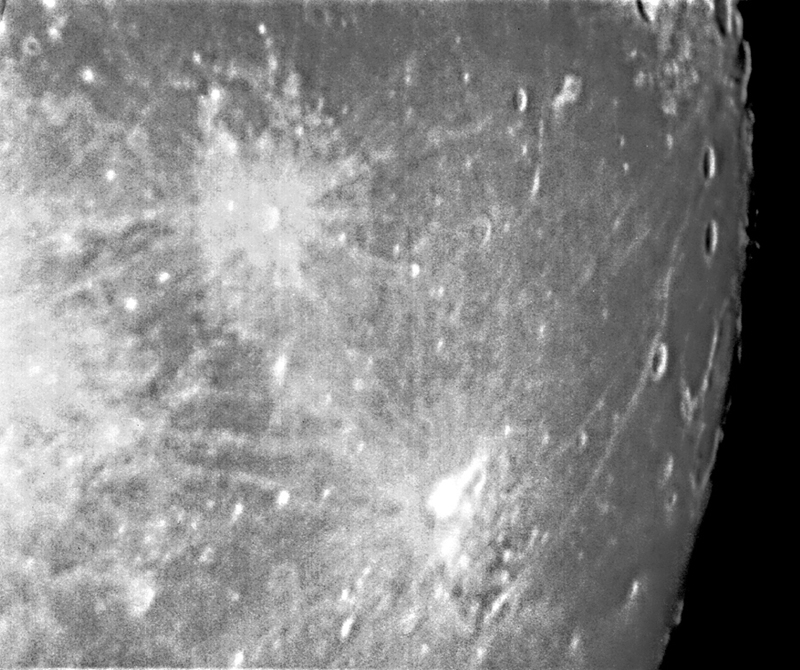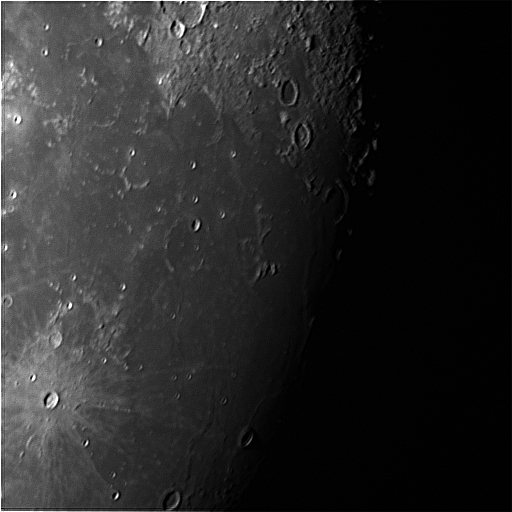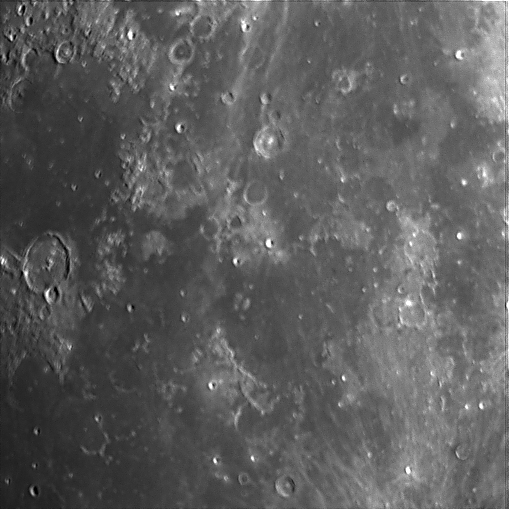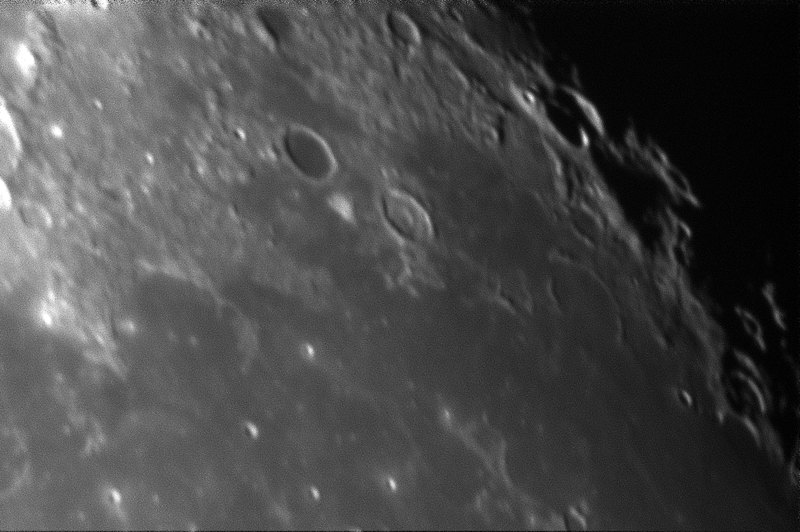
1/500 second exposure, Fuji Super HG II 400 film.
12.5" f/6 newtonian telescope plus a 25mm eyepiece.

To the west of Mare Imbrium lies a vast, sprawling region of ancient lava known as Oceanus Procellarum, the Ocean of Storms. scattered across this region are several prominent craters. The bright crater with the extensive ray system is Kepler, while the very extensive rays of Copernicus are reaching across from the left-hand edge of the field. To the north is the very bright crater Aristarchus . This is one of the brightest features on the Moon.

The crater Kepler is well shown in this image, which shows the central region of Oceanus Procellarum. The image below shows the southern region of the mare. The large crater on the left is Gassendi , which intrudes onto Mare Humorum .


The image above however, shows the south-eastern rim of the mare. The crater with the dark floor is Billy, with Hansteen is to the right of it. The mostly drowned crater to the lower left is Letronne.